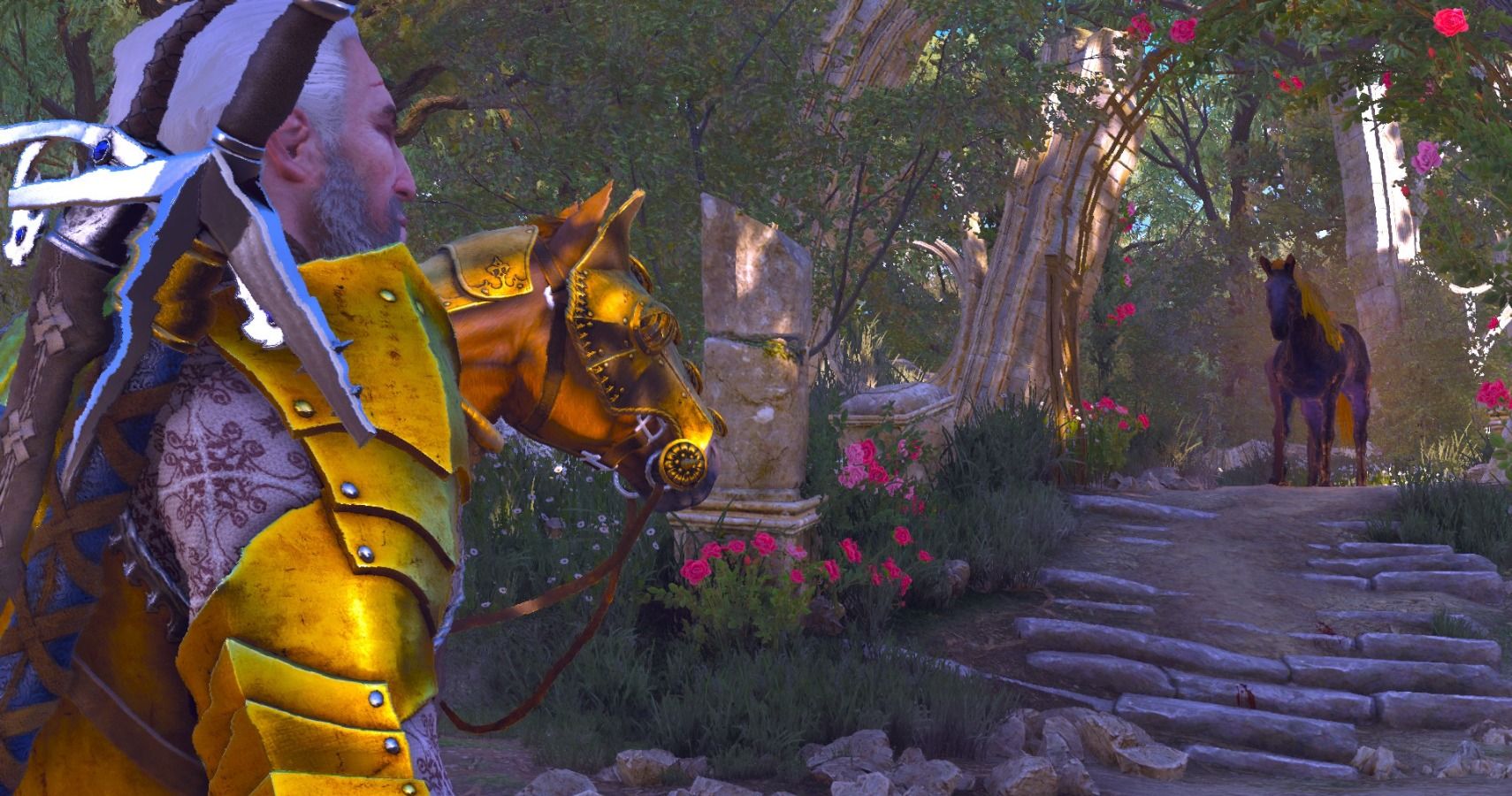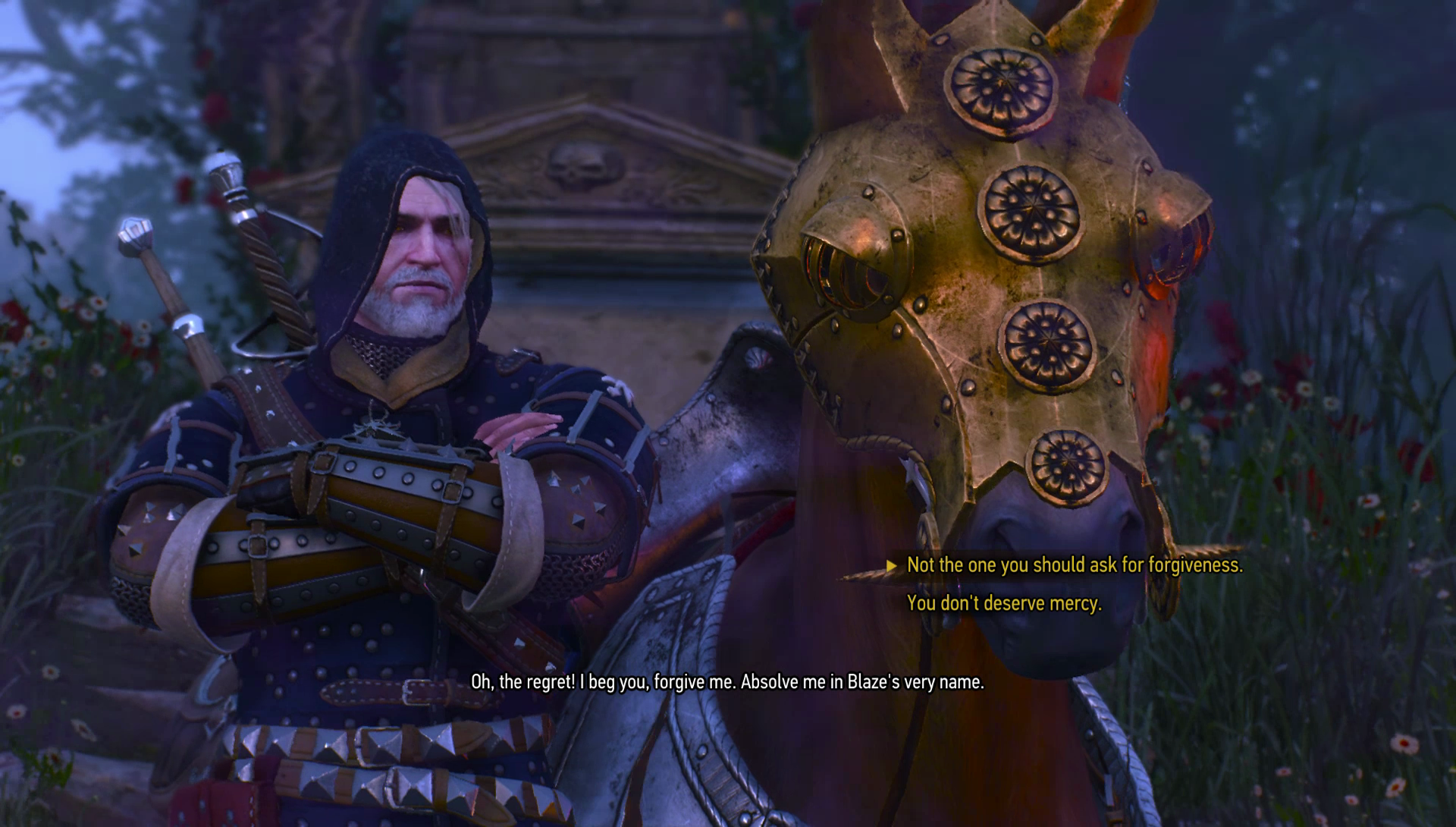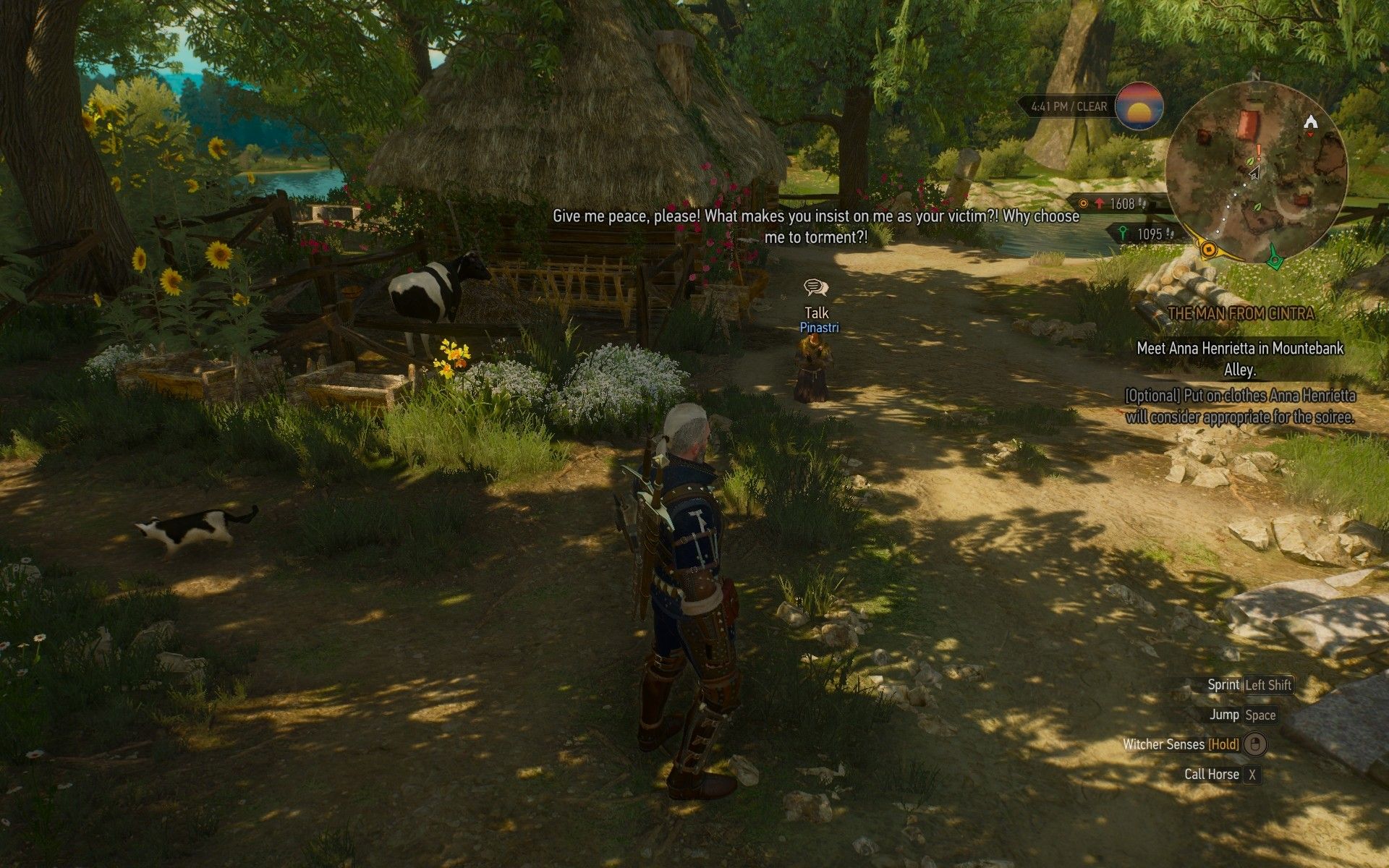The Witcher 3 transpires in a world that hums with life. Roads are frequently traversed by traders who facilitate Novigrad’s functional supply lines, while animals in the wild have their own ecosystem that endures whether you engage with it or not. Just killed a nekker? Better leg it - wolves will catch a whiff of coagulated blood any second now, and they’ll be more than happy to add some fresh meat to their dinner plate.
This degree of care extends far beyond making the world make sense. While The Witcher 3’s cities don’t need your intervention to exist of their own accord, it’s the fact that even if you do partially engage with something and either decide, “Fuck it, I’mma get Ciri,” or simply forget to finish it, it will wrap itself up all neat and tidy in its own unique way.
There are plenty of examples of this in The Witcher 3. The most basic and obvious one is that there are certain quests that need to be completed before you head across to the Isle of Mists - the lack of completion registers them as failed and affects the world state by default. Because the Continent is so interconnected, it’s not quite like failing or ignoring a quest in another RPG - the overall integrity of the game world is irrevocably changed after a failed quest, primarily because of how interwoven so many of the game’s stories are. It’s a game that’s packed with dynamic completion clauses, meaning finishing quest A instead of quest B will yield different scenarios to vice versa, and will be even more distinct should quest C have been finished instead of being left behind when you go to find Ciri.
My favourite example of this, however, isn’t in The Witcher 3’s base game. Instead, it’s the Equine Phantoms quest from Blood & Wine. I always figured there was something special at play here, but my mind was blown when CD Projekt Red lead quest designer Patrick Mills recently shared a fascinating nugget of information about the quest on Twitter.
As you can see, this quest was specifically designed with Geralt’s propensity for horse-whispering in mind. Often short-spoken when speaking to people who can reply, Geralt finds a strange kind of solace in conversing with Roach, his trusty steed who simply listens and serves as a mirror for Geralt’s most complex dilemmas.
Equine Phantoms tasks you with chomping on some funky fungi to be able to see a supposedly invisible demon. After going full psychedelica, Geralt can, in fact, spot some kind of phantom horse - hence the quest name - but he can also talk to his own one. And so Geralt puts on his best clever cap and embarks on a wild horse chase with his best pal, Roach, now a total chatterbox - but not before speaking to the other animals in the hut, which include Skelligan wolves, Novigradian dogs, and Beauclavian cats.
As mentioned above, you’re able to ignore most quests in The Witcher 3 if you want, but you can also just jump ship halfway. If you do that in Equine Phantoms, however, the world corrects itself, just like I mentioned earlier. Say you decide to head back to Beauclair, right, or to leave Toussaint entirely - this quest should either halt or fail by ordinary RPG standards. However, if you opt to revisit Pinastri the hermit later on, you’ll find out that she’s no longer plagued by some demon who sucks her blood at night - the mystery was solved.
Regis, perhaps? He’s a benevolent, blood-abstaining vampire and one of the smartest people in the Witcher universe, and he also happens to be in Toussaint right now. Surely he’d help out someone in need. Or maybe Letho - yeah, it’s reasonable to assume Pinastri just got a different witcher on the case.
Wrong. Well, not wrong, but not right either. It’s not a witcher, it’s a witcher’s horse. Your horse. Roach.
“If Geralt leaves the area without solving the mystery, the mission fails,” Mills says on Twitter. “But if you go back and talk to Pinastri later, she explains that Roach stuck around and took care of the problem on her own. A witcher's horse picks up a few tricks on the path, it seems.”
This is what I mean about how The Witcher 3 contextualizes even the quests you fail or ignore in order to offer greater consistency to its cohesive world. Everything, be it complete or unfinished, contributes to the current state of affairs universe-wide in The Witcher 3. This can be seen in the sheer variety of endings - while most people tend to focus on the base game epilogue with Ciri’s fate, it’s also worth noting that it’s important to consider whether Radovid is in power or deposed, and if Vernon Roche is still knocking about. There are so many variables in the major choices that it’s almost impossible to play the same way twice, but it’s the less ostensible minor effects of the world that truly accentuate the louder beats. These smaller stories texture the overall experience, smoothing it into something where everything is directly linked to the same centrifugal force, despite the fact barely any of said links are even remotely visible when examined under a magnifying glass.
I love The Witcher 3 for a variety of different reasons - the characters are phenomenally well-written, the consequences of your actions are palpable and significant, and the sheer scale of this beautiful world makes it a joy to explore. Ultimately, though, all of those things are linked by the fact they’re defined by the same malleable and forever shape-shifting structure of stories influencing stories, whether they’re completed, half-considered, or totally ignored.
I’ve never seen a world so dynamically consistent with itself as The Witcher 3. Thank god for magic mushrooms.



